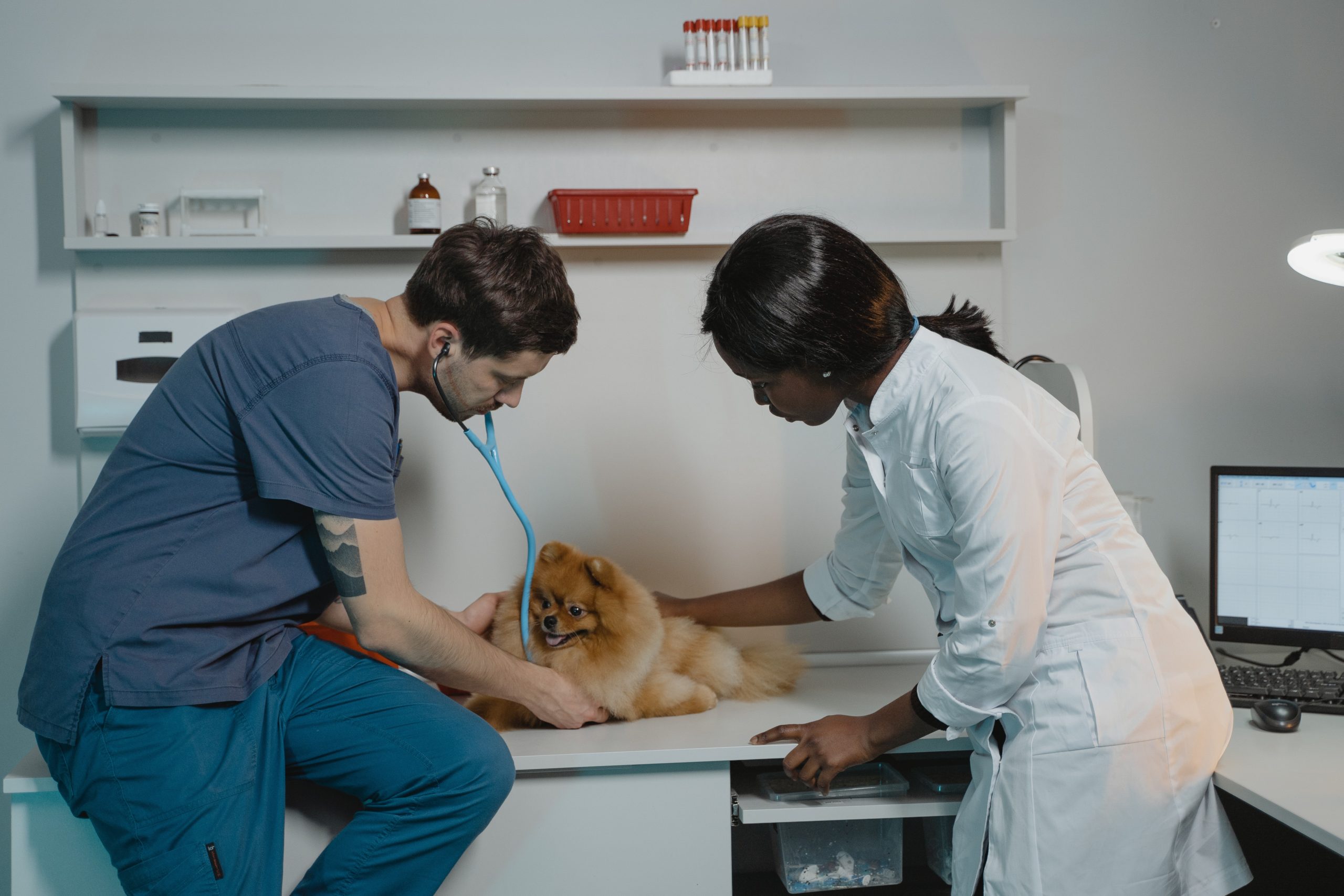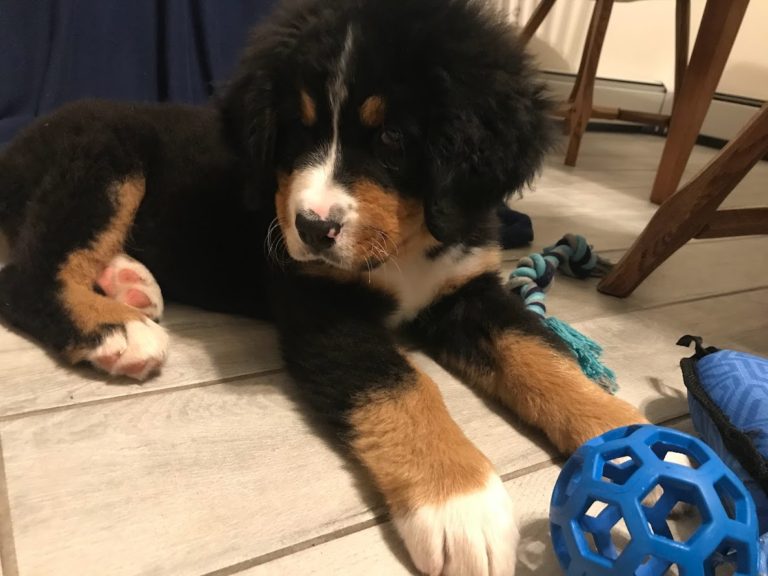Help! My Dog was Diagnosed with Puppy Strangles!
Ezra was a sickly puppy from just a few days after bringing him home so I was pretty alert to any changes in his behavior or physical condition. But late one Sunday night, he seemed particularly whiny and needy. I noticed what looked like two skin lesions on his back. I was upset about it but decided to wait to bring him to the vet first thing in the morning.
Behaviorally, he was still a very happy and energetic puppy. He wanted his belly rubbed until he fell asleep, which was unusual, and he didn’t stay asleep long. But otherwise, he seemed OK and I had assumed he developed a food allergy.
Boy, was I wrong.
What was just small bumps grew exponentially in size and number overnight, oozing with blood and puss. As the vet technicians shaved his fur, we could see the bumps growing right before our eyes. I was scared. He cried like I never heard before. I cried too. Over the course of the next week, there were a lot of tears and sleepless nights.
It took multiple vet trips to finally figure out what he had: Puppy Strangles. It’s a super rare autoimmune disease without a known cause.
If your dog was diagnosed with it, you’ve come to the right place. This post will discuss what it is and answer all your questions about the disease, how to treat it, and how to make your dog more comfortable through it.
This post contains affiliate links, which means I may receive a small commission, at no extra cost to you, if you make a purchase using this link. Please see my disclosure for more details.
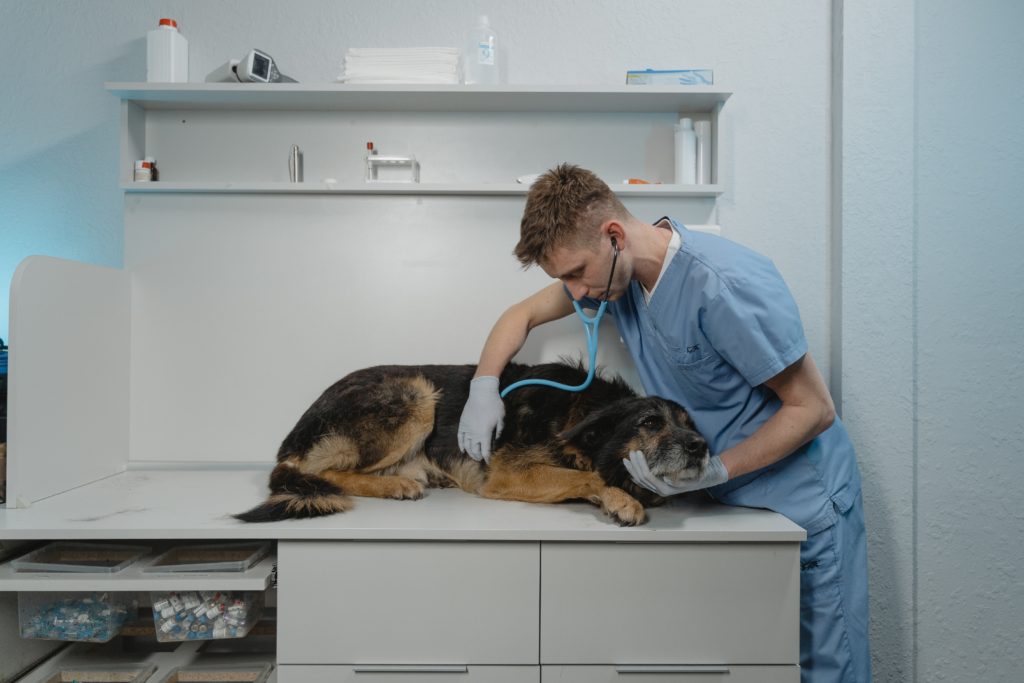
What is Puppy Strangles?
Juvenile Cellulitis, also known as Puppy Strangles, is a rare autoimmune disease where the skin attacks itself. To the untrained eye, it looks like skin lesions or abscesses focused around the puppy’s lymph nodes. It’s known as puppy strangles because it typically only occurs to young dogs and can lead to asphyxiation if left untreated.
It generally only affects puppies that are six months old or younger. Once your puppy has had an outbreak, it’s not likely he will have one again, and even less likely once your puppy turns six months old. But it’s not impossible to have an outbreak later in life either. Talk to your vet for their expert opinion.
It could lead to strangulation because if left untreated, the pustules will spread to the face and neck. It enlarges the lymph nodes and in severe cases it can asphyxiate the puppy. If your dog has a severe case, it is possible that his skin or face will scar permanently.
What causes Juvenile Cellulitis in dogs?
Unfortunately, there is no known case or trigger for Juvenile Cellulitis. There are indications that the disease may be hereditary, but there is not enough scientific evidence to confirm that. Because it is thought to be hereditary, you should not breed any dogs that have it. To ensure the health of your breeding line, this is the most responsible decision you can make.
How is Canine Juvenile Cellulitis treated?
In severe cases, your dog will be hospitalized for at least a few days. Some vets or dog owners try to avoid hospitalization because of the cost. If your dog isn’t going to be hospitalized, your vet will send you home with prednisone, which is a steroid pill. It’s possible your vet will also give a steroid cream or sedatives to keep your dog comfortable.
My vet didn’t recommend immediately hospitalizing him, but sometimes I wish she did. I had to call the vet with daily updates on his condition so that she could determine if we needed to be hospitalized or not. I had to take three days off of work and follow Ezra around the house to make sure he wouldn’t scratch. If he started to scratch, I had to stop him. In the beginning, he did nothing but scratch! I couldn’t even take a shower or go to the bathroom because if I did, I could hear him yelping in pain from scratching.
We were put on a steroid pill, increasing in dosage at first and then tapering over about three weeks. We also had a steroid ointment to rub on him every 4 hours for the first few days, and then taper off. I asked for a sedative so both Ezra and I could actually sleep. I’m glad I gave him the sedative; however, he was given too large of a dose and started having accidents in the house. He even had an accident while he was sleeping. It definitely added more stress to the whole experience, but I was ultimately thankful for it because I could catch up on sleep.
Had it gotten worse, he would need to be admitted a hospital to see a specialist 40 minutes away. Luckily, he got better by end of the week, though it took several weeks for the pustules to go away.
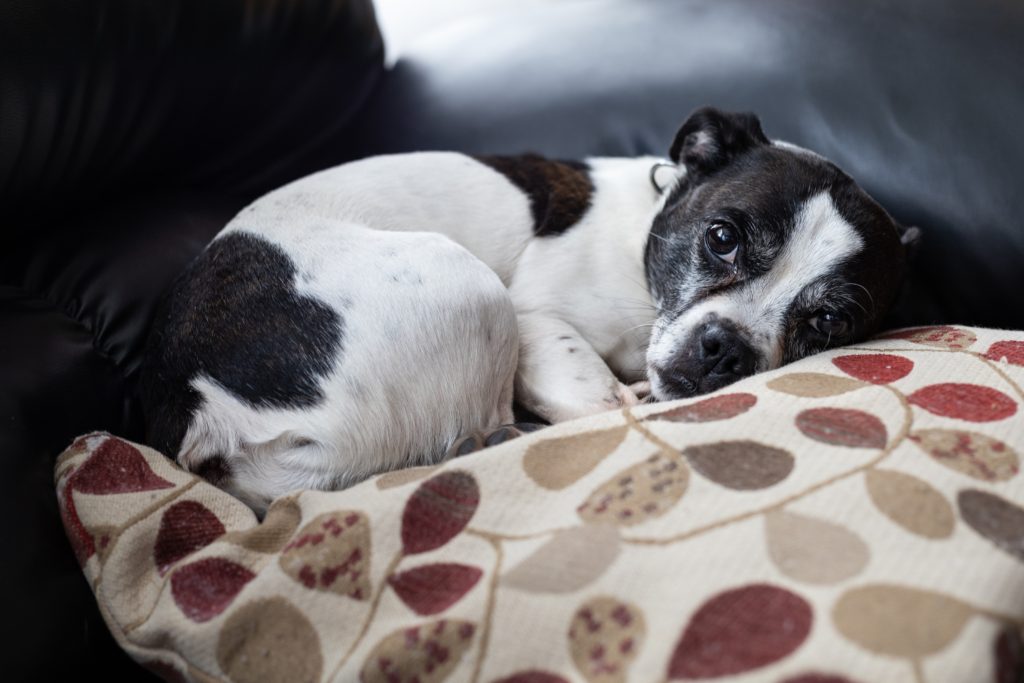
How do I make my dog more comfortable with Puppy Strangles?
First, you should try to stay calm. I know it’s hard because this is a life-threatening disease that requires a lot of your attention. It’s draining and you are probably very concerned. But you should keep your cool because dogs can read our emotions and they can change their behaviors based on how they read our reactions. You want your dog to be calm too, so even though it’s hard, try your best to stay collected. When you feel like you can’t control your emotions, remind yourself that everything will be totally fine. I know it’s scary and it might be hard to believe at the moment, but there are lot of a reasons not to panic.
Second, try to prevent your dog from itching. Puppy strangles, or juvenile cellulitis in dogs, is a very uncomfortable and painful disease. Your dog’s skin will be very itchy and he will want to scratch, even if it hurts him. But this will make the condition worse, so it’s best to prevent or mitigate it as much as you can.
Third, sometimes steroids makes your heart race and increases your body temperature. It can happen in humans, and it can happen in dogs too. This means your pup may feel really hot, even in the dead of winter. Ezra wanted to sleep outside in the snow most nights when he was on steroids. Try to help your dog stay cool to make him more comfortable.
Check out the complete list of tips to make your pup more comfortable during Puppy Strangles for more advice.
Finally, if a dog is on steroids, it is possible that it will make him somewhat aggressive. If your dog is experiencing this, be cautious with the aggression and just know it’s temporary due to the medication. Just give him some space!
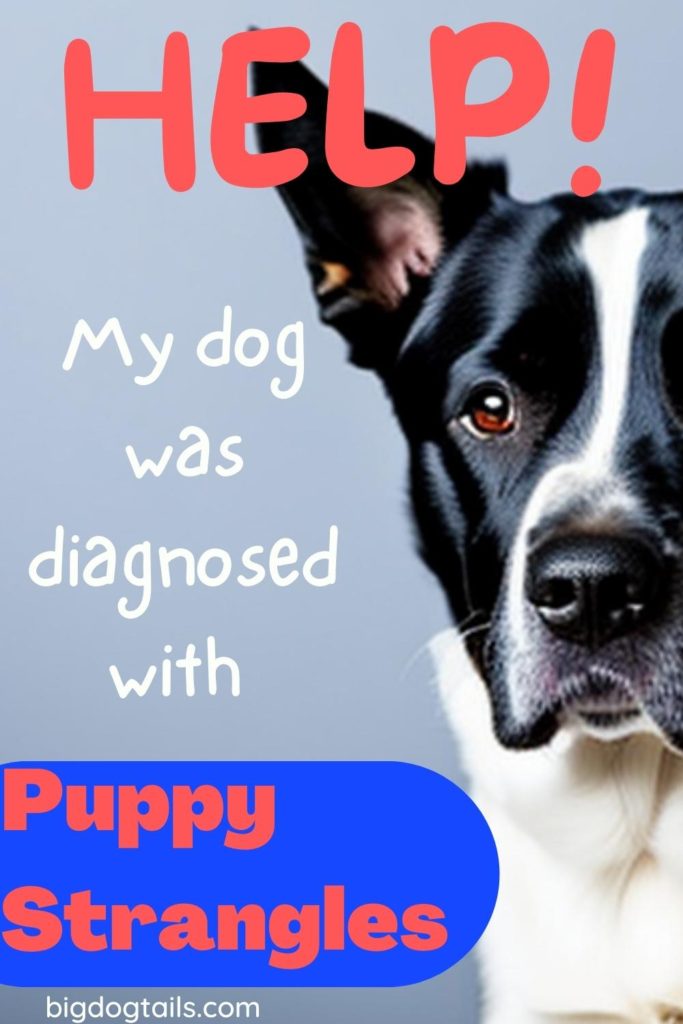
Frequently Asked Questions
The last thing you need to know about Puppy Strangles
It’s a scary disease and it can be fatal, but don’t worry. Most dogs today don’t die of it. You and your dog will most likely get through it, and your dog will continue living a wonderful life for a long time next to you.
It’s heartbreaking, but short-lived. Everything will be ok! If you need a reminder, head over to our post that describes all the reasons not to panic if your dog has Puppy Strangles.

